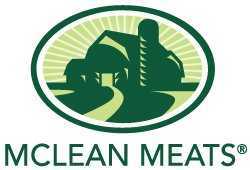Gluten is a buzzword that’s become increasingly common in our society. While most people that have heard the word know that it’s not supposed to be good for you, many people don’t understand what it is, what foods contain it, and why it causes allergies.
Before eliminating anything from your diet completely, it’s important to understand fully why you’re making the decision.

With approximately 1% of North Americans that have Celiac disease and an increasing number that report gluten sensitivity, there’s a good chance that you or someone you know should be doing their research on the subject.
Our own Vice President, Michelle Nielson, suffered from health problems for eight years before doctors thought to test her for food allergies. When results came back, she was surprised to find that she tested positive for both gluten and soy allergies. What’s even more shocking is how many people needlessly suffer from food allergies because they are unaware of what’s causing their symptoms!
That’s why at McLean, we are extremely diligent in our efforts to provide gluten-free foods. If Michelle can’t eat it, then we won’t sell it!
So what is gluten?
Gluten is the name for proteins found in wheat, with varieties including rye, barley, spelt, durum, emmer, farina, farro, KAMUT® khorasan wheat and einkorn and triticale. If you see any of these ingredients on a product label, it means that they contain wheat protein.
What types of foods contain gluten?
Any foods that contain wheat products contain gluten. This includes obvious foods like bread, beer, pasta, and baked goods made with wheat flour. However, gluten is commonly used as a binding or thickening agent in other seemingly innocuous foods like soy sauce and even certain licorice! Trace amounts of gluten that are a result of cross-contamination are also very common; this can happen anywhere from a restaurant to a large manufacturing plant.
What are the symptoms of a gluten allergy?
Gluten allergies can manifest in a variety of different ways, but commonly present as digestive problems including nausea and vomiting, diarrhea, and bloating. Other common symptoms of gluten allergies include respiratory problems, eye, skin and throat irritation, and hives or rashes. Less common symptoms can include suppressed immune response, joint pain, fatigue, and depression.
What’s the difference between Celiac disease and gluten sensitivity?
Celiac disease is a genetically inherited trait that renders a person incapable of processing gluten. The presence of gluten in the digestive tract triggers an allergic reaction that causes the degradation of the important cilia that help move food through your intestines. For people with Celiac disease, exposure to even trace amounts of gluten can trigger a severe allergic reaction that can result in serious health repercussions. Gluten sensitivity, while not a diagnosable disease, is a milder form of intolerance that can lead to a variety of the uncomfortable symptoms previously mentioned, and can also have a big impact on someone’s overall health and well-being.
Why is there an increase in the number of people with gluten allergies?
The fact is that humans have not consumed large amounts of gluten in our diets for very long.The agricultural revolution introduced it as a staple in our diets about 10,000 years ago, and from an evolutionary standpoint, that’s not long enough for our bodies to adapt to the dramatic change in our diets.
Also, the wheat that we consume now contains about 14 times the amount of gluten that it did 100 years ago as a result of the introduction of GMO-based agricultural practices. Modern wheat has an extremely high concentration of gluten, meaning that we are consuming far too much of it, even when we eat wheat products in moderation.
How can gluten be avoided?
The only way gluten can be avoided is by checking the labels on your food to make sure it is labeled Gluten Free. Checking labels for wheat-based ingredients is not enough for someone with severe allergies; many manufacturers do not take precautionary measures to avoid cross-contamination. Government agencies in both Canada and the U.S. regulate the labeling of food packaging; so make sure yours says “Gluten Free.” Just check out our Teriyaki Jerky packaging for example:

At Mclean, most of our plants do not process any foods that contain gluten. Any plants that do process gluten adhere to the strictest separation and segregation standards for production, cleaning, and storage.
While there’s no foolproof way to avoid gluten when eating out at restaurants, you can rest assured when preparing food at home that any and all McLean products will be safe for you and your family to eat!
Please feel free to check out our ingredients page for more information.
